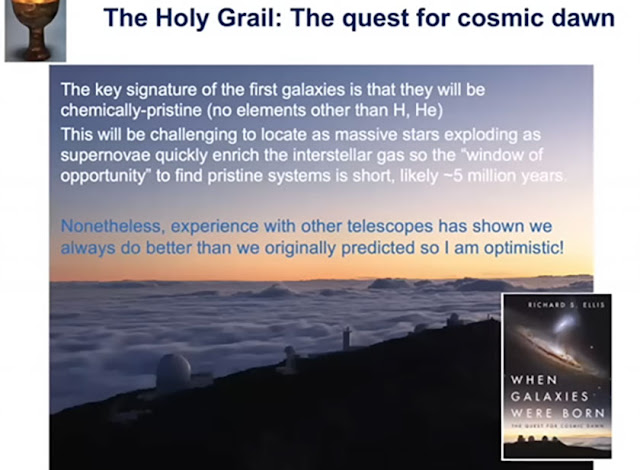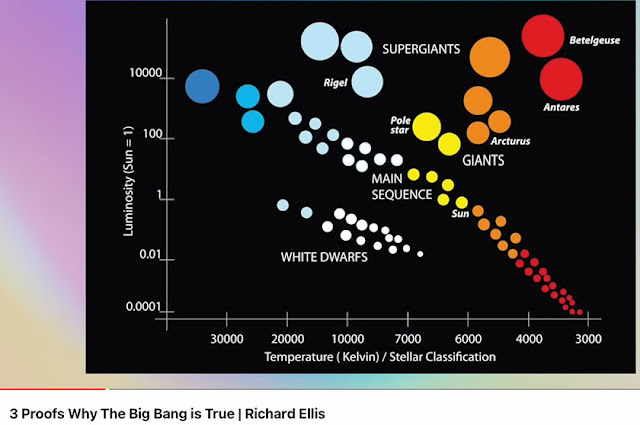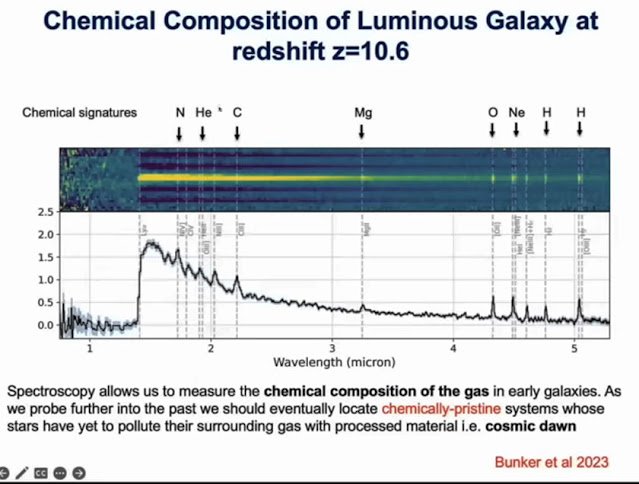Greetings from Palmia Observatory
This week we attended a viewing of the 1961 classic movie, X-15 and watched a great conversation with Richard Ellis on the latest findings leading up to the Cosmic Dawn.
Well we drove to Lakewood to see this film which was screened as part of an AIAA event. Truth be told, my interest might have been more to see one of my first TV girlfriends, Mary Tyler Moore, in her first starring role, so Resident Astronomer Peggy and I met up with Math Whiz, Dave, for the screening.
 |
| Poster for 1961 released X-15 movie being shown at local AIAA event (Source: United Artists) |
It was ok for a 1961 era film were social roles for men and women clearly reflected that era and where the tough test pilots and other personnel had to light up a cigarette to show their virility. I also never realized how constrained the X-15 pilot was and how he could barely move his head to the left or right. In addition, the pilot had to be talked down while landing by one of the chase planes that helped the pilot control the elevation and rate of descent. In fact, the film shows one of the cases where the chase plane had become damaged and lost hydraulic pressure, but, nonetheless, the pilot continued to talk the X-15 down for a good landing. The chase plane eventually crashed, and the pilot was killed.
Anyway, a key part of the AIAA event was a discussion of the film by Michelle Evans, author of "X-15 Rocket Plane."
Michelle had copies of her book available for sale and Resident Astronomer Peggy bought me a signed copy. Now, since most of my book reading and purchases is done online in electronic format, where are we going to put this book on already bulging and full bookshelves?
 |
| Michelle Evans, author of "The X-15 Rocket Plane" introduces X-15 movie (Source: Palmia Observatory) |
In other activities during the week, we had a chance to listen in on a conversation between Brian Keating and Richard Ellis on some of the recent findings about the first stars and galaxies that turned on just after the big bang. This era is called the "Cosmic Dawn", which is also the title of Ellis' just released book. You can check out the conversation yourself at: https://www.youtube.com/watch?v=EHxxTastS3g
 |
| Great discussion on searching for Cosmic Dawn, now with JWST (Source: Brian Keating) |
Richard Ellis is mostly an observational cosmologist at the University College London and is the author of the recently released, "When Galaxies Were Born." The key signature of the first galaxies is that they are composed of chemically pristine stars, which contain on hydrogen and helium.
 |
| The Holy Grail: The Search for Cosmic Dawn (Source: Richard Ellis) |
All observed stars lie somewhere on the H-R Diagram. The search for cosmic dawn has to find examples of the very oldest of stars.
 |
| Where to look for pristine stars (Source: Richard Ellis) |
So no matter where the star is on the sequence of his evolutionary history, we need to find very old stars. These old stars, not contaminated by the elements from other supernovae explosions will be at very high red shift.
 |
| Chemically pristine stars will be observed at very high redshift (Source: Richard Ellis) |
Early results from JWST have left astronomers with a puzzle. I haven't got a good understanding of how the assumed value for the Star Formation Rate (SFR) is key to understanding how fast stars can form in the early universe. You can see in the following screenshot that there is some discrepancy between the observations and the theoretical predictions.
 |
| JWST has been able to observe more very old stars (Source: Richard Ellis) |
As the observations become more refined, we get better agreement for various estimates of SFR and how it evolves over the history of the universe. I'm looking forward to getting a better understanding of the concepts involved here and can't comment more about it at this time.
 |
| The Census of Star-forming Galaxies at Redshift 10 (Source: Richard Ellis) |
When spectrographs of stars and galaxies observed at red shifts, like here at z = 10.6, we see that this galaxy already has elements present that could have been made in the nuclear synthesis inside earlier younger stars. So, the observations have to still be made much earlier in time when the observed stars, mostly yet to still be found, did not have any of these elements.
 |
| Spectroscopy at redshift 10+ leads the search for pristine stars (Source: Richard Ellis) |
So this long journey in astronomy back to the earliest era of the universe is to find the cosmic dawn, when the first stars ever turned on. These first stars would not have any of the elements present that would have been made in later older stars that had finished their chemical evolution.
 |
| The ultimate goal is seeing the first stars to turn on after the big bang (Source: Richard Ellis) |
Finally, after our search for cosmic dawn, and feeling the need for some comic relief, the Python Developers Community reminded us of our daily work goals. How many times have you had to go back and look at old code or old algorithms and try to remember what the heck were you thinking?
 |
| Coding troubles? (Source: Python Developers Community) |
Until next time,

No comments:
Post a Comment